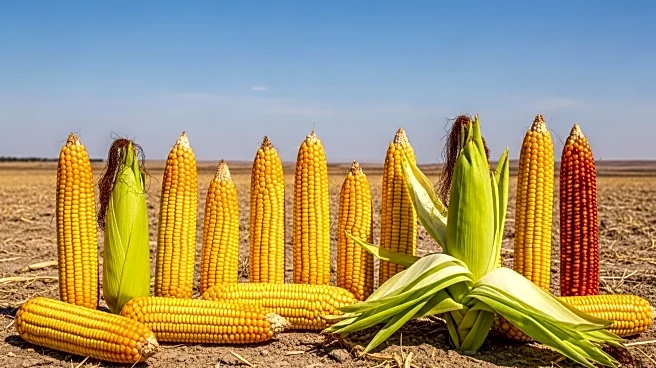What's Happening?
The agricultural sector in the United States is facing significant challenges in hiring and retaining workers, as highlighted by a recent report. With the national unemployment rate around 4%, many industries are struggling to find suitable employees, and agriculture is no exception. Factors such as higher wages in other industries, an aging rural population, and changing immigration policies are exacerbating the issue. For instance, a feedlot in northeast Nebraska is losing employees to a nearby trucking company that offers similar wages but with more comfortable working conditions. Despite offering competitive wages, the demanding nature of farm work, which involves exposure to harsh weather conditions, makes it less appealing compared to other jobs. Farmers are exploring various strategies to attract workers, including targeting high school and college students for seasonal work and utilizing online job platforms. Additionally, some are turning to the H-2A visa program to hire seasonal foreign workers, although this comes with higher costs and logistical challenges.
Why It's Important?
The difficulty in hiring farm workers has broader implications for the U.S. agricultural industry and food supply chain. As farms struggle to maintain adequate staffing levels, there could be potential impacts on productivity and the ability to meet market demands. This labor shortage may lead to increased operational costs, which could be passed on to consumers in the form of higher food prices. Moreover, the reliance on foreign labor through programs like H-2A highlights the industry's vulnerability to immigration policy changes. The situation underscores the need for innovative solutions and policy interventions to ensure a stable and sustainable agricultural workforce, which is crucial for the nation's food security and rural economic health.
What's Next?
Farmers and agricultural employers are likely to continue exploring diverse recruitment strategies, including enhancing job appeal through better working conditions and employee benefits. There may also be increased advocacy for policy changes to support the agricultural workforce, such as adjustments to immigration laws or incentives for domestic workers. Additionally, technological advancements in agriculture could play a role in mitigating labor shortages by automating certain tasks, although this transition may require significant investment and training.
Beyond the Headlines
The labor challenges in agriculture also raise ethical and cultural considerations, such as the treatment and working conditions of farm workers. Ensuring fair wages and safe working environments is essential for attracting and retaining a dedicated workforce. Furthermore, the cultural shift towards valuing agricultural work and recognizing its importance to society could help in changing perceptions and attracting more workers to the industry.











